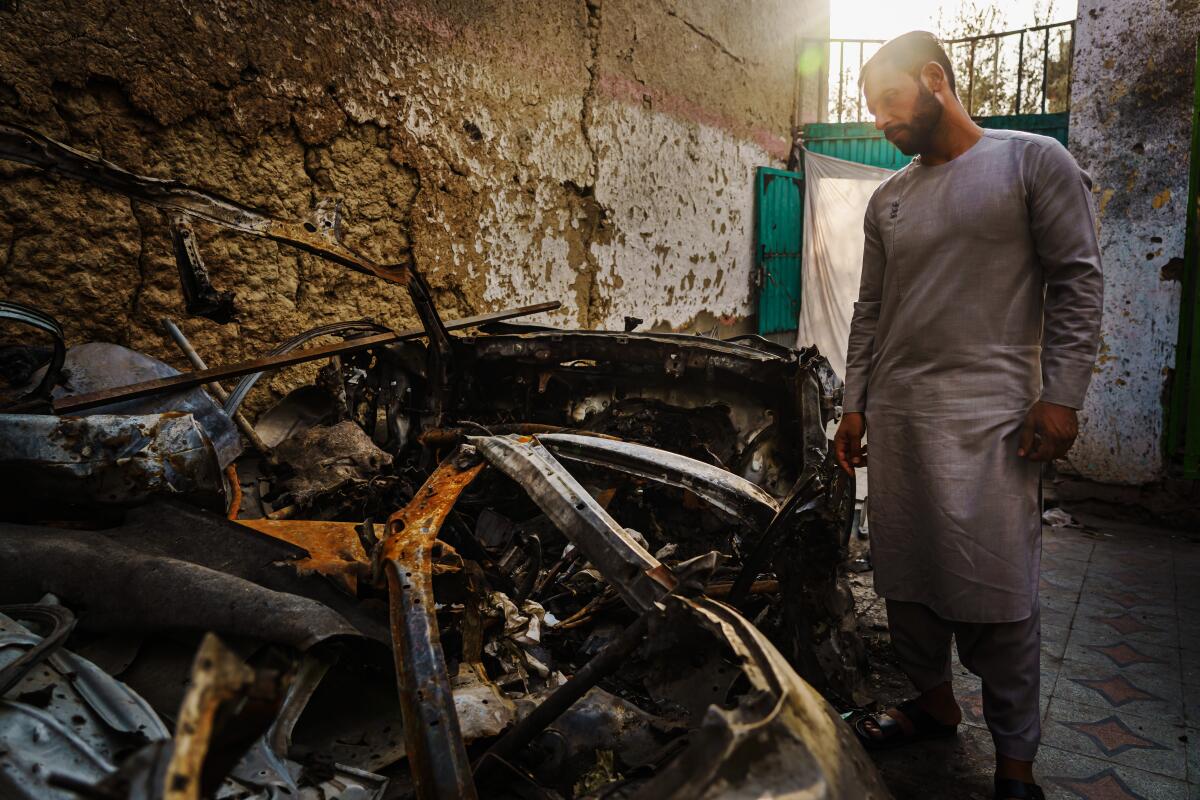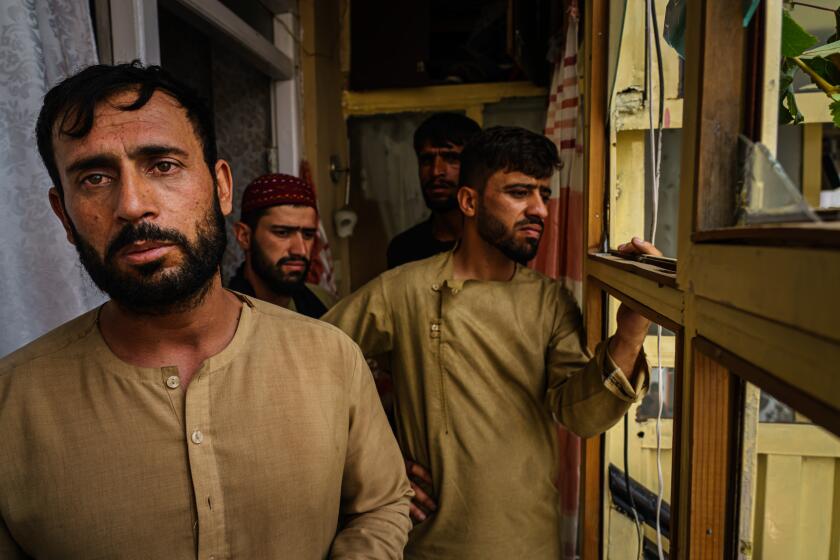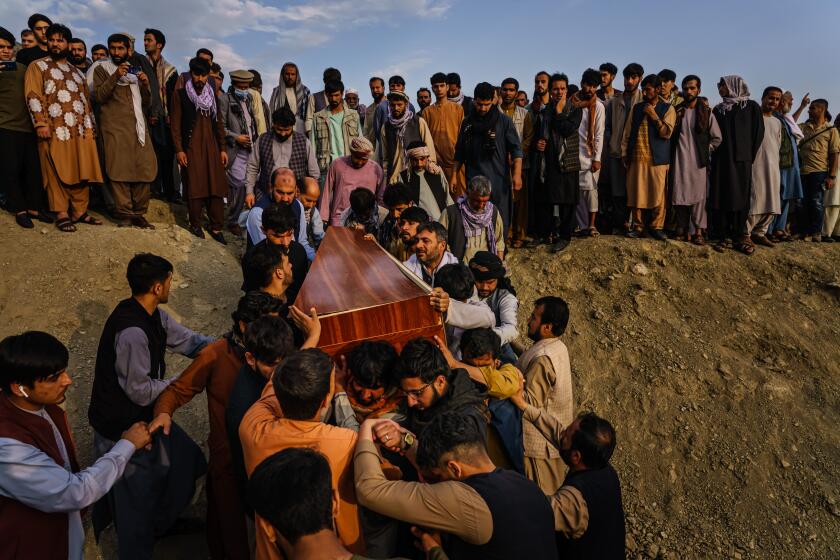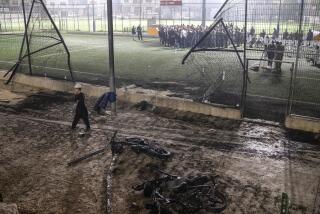Pentagon watchdog finds no misconduct in deadly Afghan drone strike

WASHINGTON â An independent Pentagon review has concluded that the U.S. drone strike that killed innocent Kabul civilians and children in the final days of the Afghanistan war was not caused by misconduct or negligence, and it doesnât recommend any disciplinary action, the Associated Press has learned.
The review, conducted by Air Force Lt. Gen. Sami Said, found breakdowns in communication and in the process of identifying and confirming the target of the bombing, according to a senior defense official familiar with the report. But Said concluded that the mistaken strike happened despite prudent measures to prevent civilian deaths, said the official, who spoke on condition of anonymity to discuss a report not yet released.
Said, the Air Force inspector general, had no direct connection to Afghanistan operations and thus was deemed an independent judge of the matter.
Saidâs review said the drone strike must be considered in the context of the moment, as U.S. forces under stress were being flooded by information about threats to troops and civilians at the Kabul airport just days after a deadly suicide bombing. Thousands of Afghans were swarming the airport, trying to get out of the country following the Taliban takeover.
According to the official, Said found that better communication between those making the strike decision and other support personnel might have raised more doubts about ordering the strike, but in the end may not have prevented it.
Said was asked to investigate the Aug. 29 drone strike on a white Toyota Corolla that killed Zemerai Ahmadi and nine family members, including seven children. Ahmadi, 37, was a longtime employee of an American humanitarian organization.
An errant U.S. drone strike killed 10 members of their family. Theyâre still awaiting compensation
U.S. officials called the errant drone strike that killed 10 in Afghanistan a âtragic mistake.â The family is still waiting for it to be rectified.
The intelligence about the car and its potential threat came just days after an Islamic State suicide bomber killed 13 U.S. troops and 169 Afghans at a Kabul airport gate. The U.S. was working to evacuate thousands of Americans, Afghans and other allies in the wake of the collapse of the countryâs government.
Said concluded that U.S. forces genuinely believed that the car they were following was an imminent threat and that they needed to strike it before it got closer to the airport.
The report, which has been endorsed by Defense Secretary Lloyd J. Austin III, made several recommendations that have been passed on to commanders at U.S. Central Command and U.S. Special Operations Command. The official said the review recommends that more be done to prevent what military officials call âconfirmation biasâ â the idea that troops making the strike decision were too quick to conclude that what they were seeing aligned with the intelligence and confirmed their conclusion to bomb what turned out to be the wrong car.
The review recommends that the military have personnel present with a strike team whose job it is to actively question such conclusions. The report says using a so-called red team in such self-defense strikes that are carried out quickly might help avoid errors.
The Pentagon says would-be suicide bombers were targeted in a drone strike. An Afghan family says several of their members were hit.
Said also recommended that the military improve its procedures to ensure that children and other innocent civilians are not present before launching a time-sensitive strike.
For days after the strike, Pentagon officials asserted that it had been conducted correctly, despite mounting reports that multiple civilians had died and growing doubts that the car contained explosives. Saidâs review concluded that officials made their initial assessments too quickly and did not do enough analysis.
While Saidâs report does not find individual fault or recommend discipline, officials said commanders may decide to take administrative actions once they review his report.
The U.S. is working to pay financial reparations to the family, and potentially get them out of Afghanistan, but nothing has been finalized.
A second defense official said Austin has asked that Gen. Frank McKenzie, head of U.S. Central Command, and Gen. Richard Clarke, head of U.S. Special Operations Command, make recommendations for changes to address the gaps.
They were hoping to win Fulbright scholarships. Then the Taliban took over, and the U.S. went silent
Afghans short-listed for the prestigious scholarship say theyâve been forgotten since the Taliban took power. Deadlines loom to apply to U.S. schools.
Saidâs review mirrors many of the findings outlined by McKenzie several weeks after the investigation.
The Central Command review found that U.S. forces tracked the car for about eight hours and launched the strike in an âearnest beliefâ â based on a standard of âreasonable certaintyâ â that it posed an imminent threat to American troops at the Kabul airport. The car was believed to have been carrying explosives in its trunk.
The airstrike was the last in a U.S. war that ended just days later, as the final American troops flew out of Kabul airport, leaving the Taliban in power.
More to Read
Sign up for Essential California
The most important California stories and recommendations in your inbox every morning.
You may occasionally receive promotional content from the Los Angeles Times.













